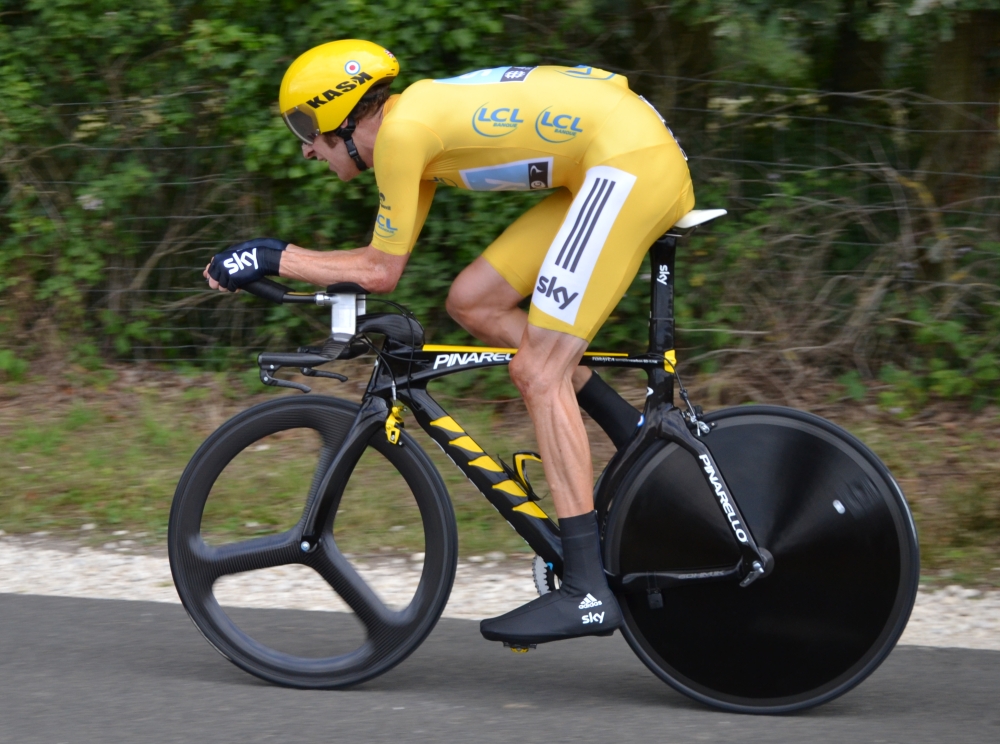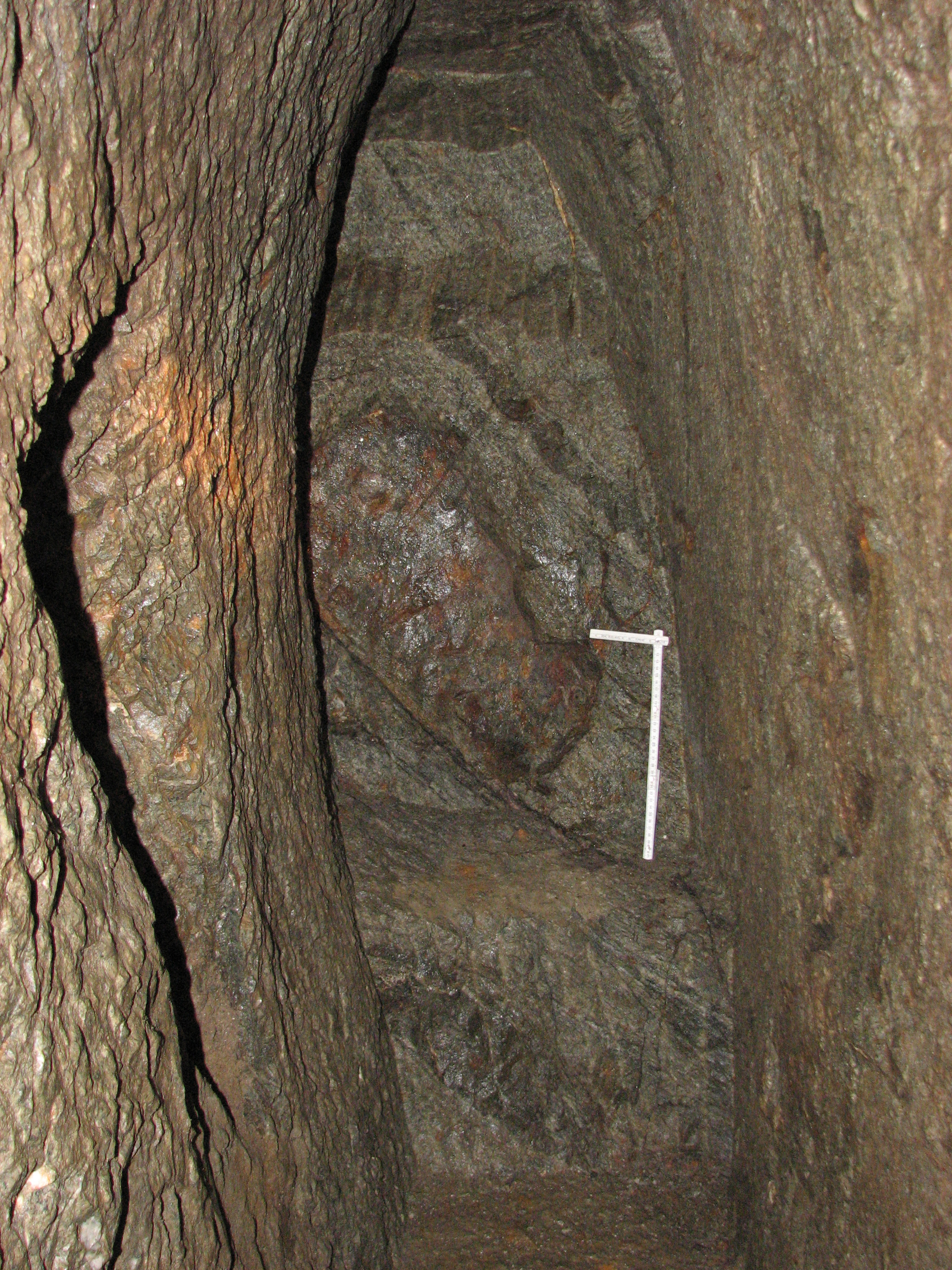|
Col Du Bonhomme
The Col du Bonhomme () (elevation ) is a mountain pass in the Vosges Mountains of France. The pass connects Kaysersberg (Haut-Rhin) with Saint-Dié-des-Vosges (Vosges) (east–west) and is also crossed by the Route des Crêtes (north–south). The pass takes its name from the nearby village of Le Bonhomme, 6 km to the east. History Between 1871 and 1918, the pass was a border crossing between Lorraine (region), Lorraine (France) and Alsace, which had been ceded to Germany under the Treaty of Frankfurt (1871), Treaty of Frankfurt. A stone marking the former border is situated 100 m south of the pass on D148 (Route des Crêtes). During World War I, the pass was the scene of fighting between French and German soldiers. On 8 September 1914, the commander of the French 41st Infantry Division (France), 41st Infantry Division, 69-year-old General Bataille, and six of his men were killed in a German artillery attack. A memorial to the General and his men stands at the pass. Details ... [...More Info...] [...Related Items...] OR: [Wikipedia] [Google] [Baidu] |
Haut-Rhin
Haut-Rhin (, ; Alsatian: ''Owerelsà ss'' or '; german: Oberelsass, ) is a department in the Grand Est region of France, bordering both Germany and Switzerland. It is named after the river Rhine. Its name means ''Upper Rhine''. Haut-Rhin is the smaller and less populated of the two departments of the former administrative Alsace region, the other being the Bas-Rhin (Lower Rhine). Especially after the 1871 cession of the southern territory known since 1922 as Territoire de Belfort, although it is still densely populated compared to the rest of metropolitan France. It had a population of 767,086 in 2019.Populations légales 2019: 68 Haut-Rhin INSEE On 1 January 2021, the departments of |
Ammerschwihr
Ammerschwihr (; ) is a commune in the Haut-Rhin department in Grand Est in north-eastern France. Its inhabitants are called ''Ammerschwihriens''. Geography Ammerschwihr is a small town located on the Wine Road of Alsace. Its main economical resources come from wine-growing, in particular its famous vineyard Kaefferkopf, situated on a hill, and one of the Alsace Grand Cru vineyards. Climate Ammerschwihr has a oceanic climate (Köppen climate classification ''Cfb''). The average annual temperature in Ammerschwihr is . The average annual rainfall is with December as the wettest month. The temperatures are highest on average in July, at around , and lowest in January, at around . The highest temperature ever recorded in Ammerschwihr was on 7 August 2015; the coldest temperature ever recorded was on 13 January 1987. Demography See also * Communes of the Haut-Rhin department The following is a list of the 366 communes of the French department of Haut-Rhin. The communes coo ... [...More Info...] [...Related Items...] OR: [Wikipedia] [Google] [Baidu] |
Transport In Grand Est
Transport (in British English), or transportation (in American English), is the intentional movement of humans, animals, and goods from one location to another. Modes of transport include air, land (rail and road), water, cable, pipeline, and space. The field can be divided into infrastructure, vehicles, and operations. Transport enables human trade, which is essential for the development of civilizations. Transport infrastructure consists of both fixed installations, including roads, railways, airways, waterways, canals, and pipelines, and terminals such as airports, railway stations, bus stations, warehouses, trucking terminals, refueling depots (including fueling docks and fuel stations), and seaports. Terminals may be used both for interchange of passengers and cargo and for maintenance. Means of transport are any of the different kinds of transport facilities used to carry people or cargo. They may include vehicles, riding animals, and pack animals. Vehicles may in ... [...More Info...] [...Related Items...] OR: [Wikipedia] [Google] [Baidu] |
Fausto Coppi
Angelo Fausto Coppi (; 15 September 1919 – 2 January 1960) was an Italian cyclist, the dominant international cyclist of the years after the World War II, Second World War. His successes earned him the title ''Il Campionissimo'' ("Champion of Champions"). He was an all-round racing cyclist: he excelled in both climbing and time trialing, and was also a great sprinter. He won the Giro d'Italia five times (1940 Giro d'Italia, 1940, 1947 Giro d'Italia, 1947, 1949 Giro d'Italia, 1949, 1952 Giro d'Italia, 1952, 1953 Giro d'Italia, 1953), the Tour de France twice (1949 Tour de France, 1949 and 1952 Tour de France, 1952), and the UCI Road World Championships – Men's road race, World Championship in 1953 UCI Road World Championships, 1953. Other notable results include winning the Giro di Lombardia five times, the Milan–San Remo three times, as well as wins at Paris–Roubaix and La Flèche Wallonne and setting the hour record (45.798 km) in 1942. Early life and amat ... [...More Info...] [...Related Items...] OR: [Wikipedia] [Google] [Baidu] |
Individual Time Trial
An individual time trial (ITT) is a road bicycle race in which cyclists race alone against the clock (in French: ''contre la montre'' – literally "against the watch", in Italian: ''tappa a cronometro'' "stopwatch stage"). There are also track-based time trials where riders compete in velodromes, and team time trials (TTT). ITTs are also referred to as "the race of truth", as winning depends only on each rider's strength and endurance, and not on help provided by teammates and others riding ahead and creating a slipstream. Individual time trial are usually held on flat or rolling terrain, although sometimes they are held up a mountain road (in Italian: ''cronoscalata'' "chrono climbing"). Sometimes the opening stage of a stage race is a very short individual time trial called a prologue (8 km or less for men, 4 km or less for women and juniors). Starting times are at equal intervals, usually one or two minutes apart. The starting sequence is usually based on the finishing times ... [...More Info...] [...Related Items...] OR: [Wikipedia] [Google] [Baidu] |
1949 Tour De France
The 1949 Tour de France was the 36th edition of the Tour de France, taking place from 30 June to 24 July. It consisted of 21 stages over . The Italian team had internal problems, because Gino Bartali and Fausto Coppi could both be the team leader. During the selection procedure, Coppi almost refused to start the race, but he was convinced to start. During the race, Coppi almost pulled out, because he felt he did not have full support from the team captain. In the Alps, Coppi recovered. The race was won by Coppi, with second place taken by teammate Bartali, the winner of the previous year. Coppi also won the mountains classification, while his Italian team won the team classification. Innovations and changes The 1949 Tour de France marked the first time that the Tour de France had a stage finish in Spain, when it stopped in San Sebastian in the ninth stage. While the mountains had been categorised into two categories in 1948, in 1949 the third category was added. Teams As was ... [...More Info...] [...Related Items...] OR: [Wikipedia] [Google] [Baidu] |
Tour De France
The Tour de France () is an annual men's multiple-stage bicycle race primarily held in France, while also occasionally passing through nearby countries. Like the other Grand Tours (the Giro d'Italia and the Vuelta a España), it consists of 21 stages, each a day long, over the course of 23 days, coinciding with the Bastille Day holiday. It is the oldest of the Grand Tours and generally considered the most prestigious. The race was first organized in 1903 to increase sales for the newspaper '' L'Auto'' and is currently run by the Amaury Sport Organisation. The race has been held annually since its first edition in 1903 except when it was stopped for the two World Wars. As the Tour gained prominence and popularity, the race was lengthened and its reach began to extend around the globe. Participation expanded from a primarily French field as more riders from all over the world began to participate in the race each year. The Tour is a UCI World Tour event, which means that th ... [...More Info...] [...Related Items...] OR: [Wikipedia] [Google] [Baidu] |
Sainte-Marie-aux-Mines
Sainte-Marie-aux-Mines (; ; Alsatian: ''Mà rkìrisch'') is a commune in the Haut-Rhin department and Grand Est region of north-eastern France. Geography Sainte-Marie-aux-Mines is located in the massif of the Vosges Mountains, where it occupies the V-shaped valley of the . Nearby Lorraine is accessible by road over the (772 m) or the Tunnel Maurice-Lemaire (reopened, following a major upgrade, in October 2008). The (903 m) leads to the Col du Bonhomme and to the Route des Crêtes (''Road of the Ridges''). The Col du Haut de Ribeauvillé (742 m, 2,412 feet) gives direct access to Ribeauvillé, situated to the southeast. Sélestat in the Bas Rhin, a much more substantial commercial and political focus for the region, is just to the east, along the Liepvrette valley. Sainte-Marie-aux-Mines is surrounded on both sides of the valley by high mountains. The Lièpvrette River, which was formerly called ''Landbach'', separates the town into two parts, and, formerly, into two differ ... [...More Info...] [...Related Items...] OR: [Wikipedia] [Google] [Baidu] |
Fraize
Fraize () is a commune in the Vosges department in Grand Est in northeastern France about 25 miles from Colmar. Twin communes Since 1998 Fierza, Albania is a twin commune of Fraize. See also *Communes of the Vosges department The following is a list of the 507 communes of the Vosges department of France. The communes cooperate in the following intercommunalities (as of 2022):Town website Communes of Vosges (department) {{Vosges-geo-stub ... [...More Info...] [...Related Items...] OR: [Wikipedia] [Google] [Baidu] |
Saulcy-sur-Meurthe
Saulcy-sur-Meurthe (, literally ''Saulcy on Meurthe'') is a commune in the Vosges department in Grand Est in northeastern France. World War I top scoring flying ace René Fonck was born here in 1894. See also *Communes of the Vosges department The following is a list of the 507 communes of the Vosges department of France. The communes cooperate in the following intercommunalities (as of 2022):Official site Communes of Vosges (department) {{Vosges-geo-stub ... [...More Info...] [...Related Items...] OR: [Wikipedia] [Google] [Baidu] |
41st Infantry Division (France)
The 41st Infantry Division (french: 41e Division d'Infanterie, 41e DI) was a French Army formation during World War I and World War II. World War 1 During World War I, the division comprised: *23rd Infantry Regiment *42nd Infantry Regiment (from June 1917) *128th Infantry Regiment (from November 1917) *133rd Infantry Regiment (to June 1917) *152nd Infantry Regiment (to December 1914) *215th Infantry Regiment (from December 1914 to June 1916) *229th Infantry Regiment (from March 1916 to November 1917) *253rd Infantry Regiment (from December 1914 to June 1916) *343rd Infantry Regiment (from December 1914 to June 1916) *363rd Infantry Regiment (from September 1914 to September 1917) *373rd Infantry Regiment (from September 1914 to June 1916) *37th Territorial Infantry Regiment (from September 1914 to June 1915) *54th Territorial Infantry Regiment (from August 1918) It was part of the French 1st, 3rd, 7th, 9th, 11th, 12th, 15th, 16th, 18th, 20th, 30th, 34th and 38th Corps, dur ... [...More Info...] [...Related Items...] OR: [Wikipedia] [Google] [Baidu] |



